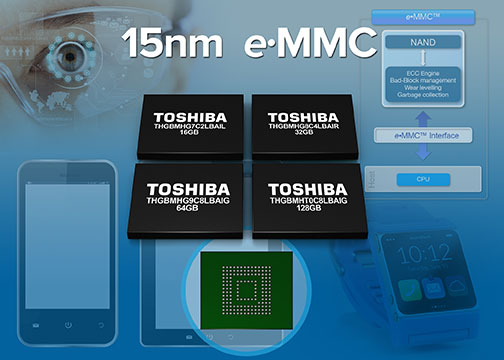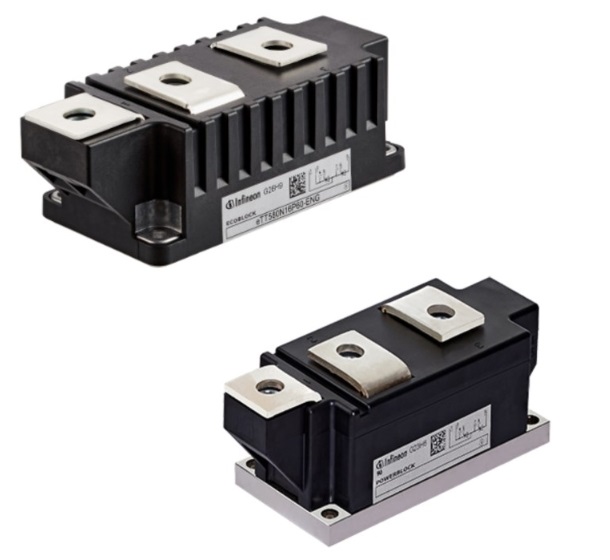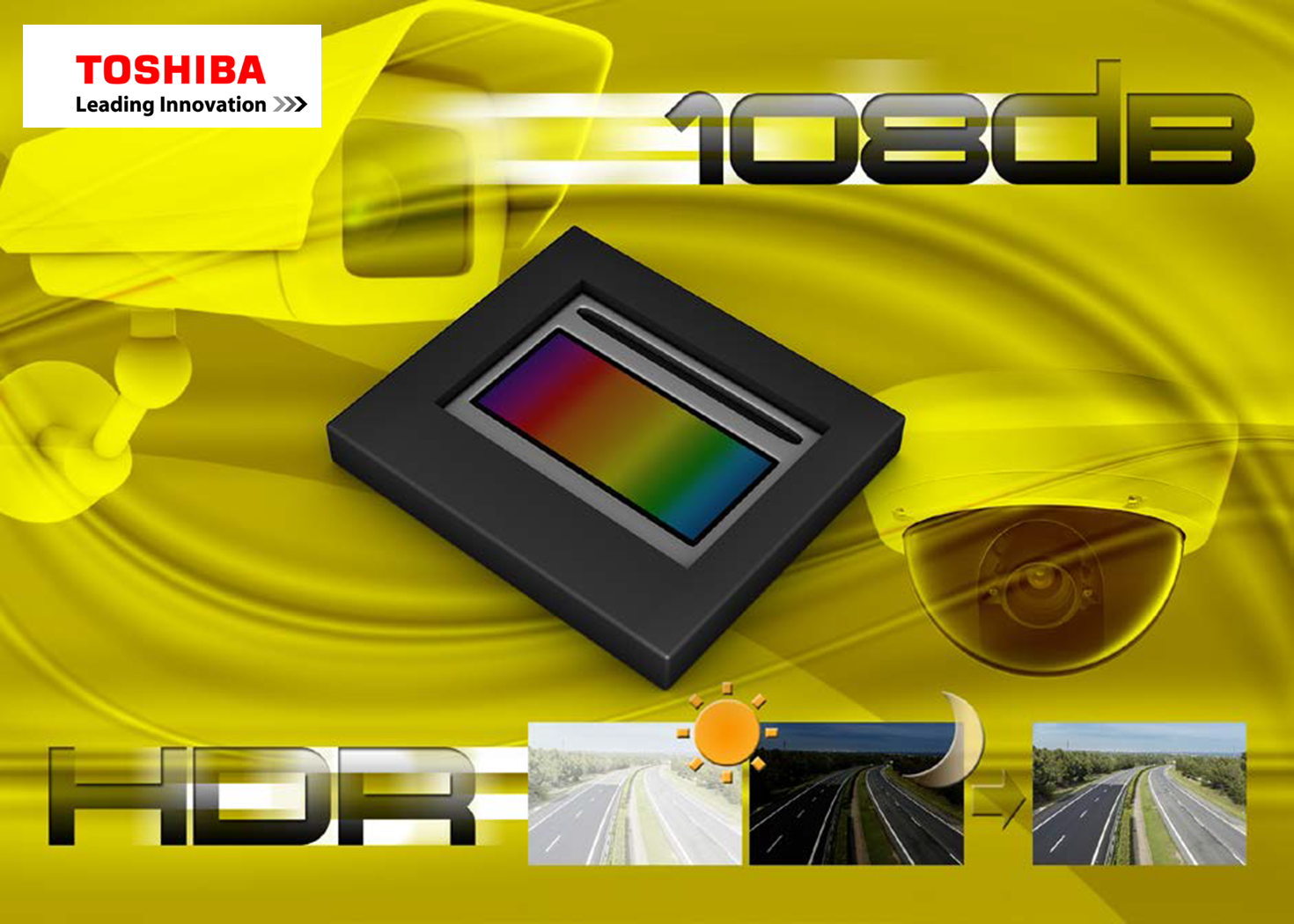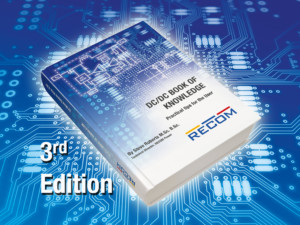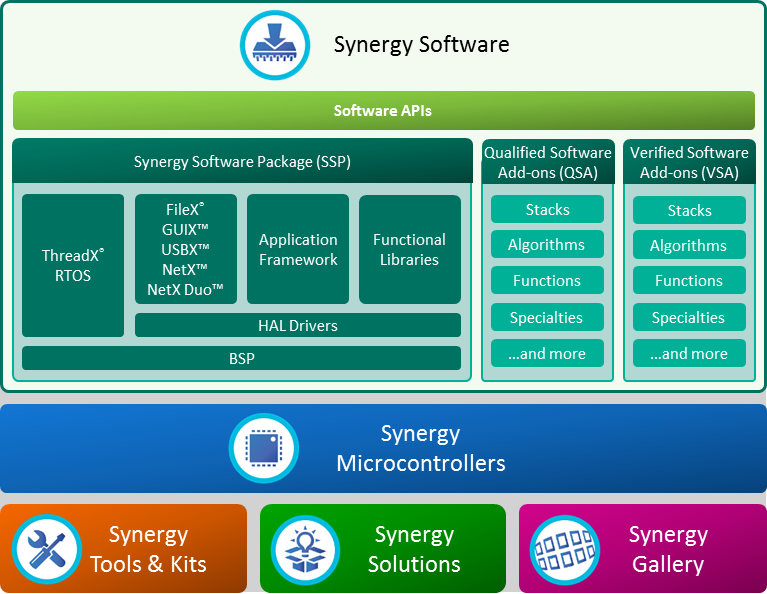Line-up of e•MMC™ from Toshiba
e•MMC™ (embedded Multimedia Card) is a family of NAND Flash memories with control functionality that offer control functions such as ECC, wear leveling and bad-block management. Toshiba’s e•MMC™ also provides a high-speed memory card interface compliant with JEDEC / MMCA Version 5.1 and lower, eliminating the need for users to be concerned about directly controlling NAND Flash memories. Thus, e•MMC™ can easily be used as an embedded storage.
Line-up
Advantages
- Higher Interface speed according to JEDEC 5.1
- Read Speed up to 315 MB/s
- Write Speed up to 130 MB/s
- Managed memory
- Package, interface, features, commands etc. are standard
- Utilizing high quality Toshiba MLC NAND flash memory in combination with a Toshiba origin developed controller
- Produced in the world’s largest, leading edge technology flash factory
The devices are designed for application in a wide range of digital consumer products, including smartphones, tablets and wearable devices.
Demand continues to grow for NAND flash memory that can support applications such as smartphones and tablets. This is particularly true for embedded memories with a controller, which minimize development requirements and ease integration into system designs. Embedded in a system, the 128GB products can record up to 16.3 hours of full spec high definition video and 39.7 hours of standard definition video.
In October 2014, Toshiba launched the industry’s first e•MMC™ products supporting all mandatory features of JEDEC e•MMC™ Version 5.1, which was officially issued by JEDEC on February 24, 2015. The JEDEC e•MMC™ Version 5.1 compliant interface simplifies system development, allowing manufacturers to minimize development costs and speed up time to market for new and upgraded products. The devices handle all essential NAND memory management functions including wear-leveling, bad block management, garbage collection and error correction.
The JEDEC e•MMC™ Version 5.1 compliant interface simplifies system development, allowing manufacturers to minimize development costs and speed up time to market for new and upgraded products. The devices handle all essential NAND memory management functions including wear-leveling, bad block management, garbage collection and error correction.
Additionally, new features standardized in JEDEC e•MMC™ Version 5.1, such as Background Operations (BKOPS) control, Cache Barrier, Cache Flushing Report and Large Replay Protected Memory Block (RPMB) Write, are applied to the new products to enhance usability.
The “command queuing feature” allows users to process multiple tasks generated by the user’s issue of multiple commands, in the order of the user’s preference, by initially storing the tasks in a waiting queue. It improves random read performance speed by approximately 30% at maximum compared to products without the “command queuing feature”. It effectively improves the user experience when simultaneously executing multiple applications on mobile devices, including smartphones and tablets.
The “secure write protection feature” expands the conventional write protect feature and protects the user’s important data stored in an assigned area from being overwritten or erased by unauthenticated users.
To support your e•MMC™ design, Toshiba offers a design guideline and a design check sheet. The design guideline highlights some of the key topics to be considered when selecting and utilizing a Toshibae•MMC™. The design check sheet can be used to give more detailed information about the individual usage scenario for the e•MMC™. Both files are available at Rutronik. Send your question to the responsible Productmanager in the Rutronik Headquarter via our Rutronik24 e-commerce platform.

